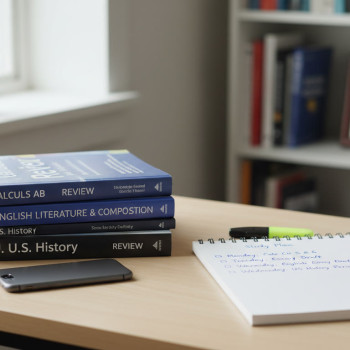Why some scholarships ask for AP scores — and why it matters
When scholarship committees ask for AP (Advanced Placement) scores, they’re usually looking for objective evidence of college-level mastery in specific subjects. For students and parents, AP scores are a compact, standardized snapshot: they can back up a narrative in an application, prove readiness for advanced coursework, or satisfy eligibility rules for subject-specific awards.
But asking for AP scores is also about fairness and verification. Unlike course grades, which can vary by high school and teacher, AP exams are scored the same way across the country (and many countries), which gives scholarship panels a consistent baseline for comparison.
Quick reality check
If a scholarship lists AP scores among required materials, don’t assume a simple screenshot or self-report will do. Many programs explicitly require official score reports from the College Board — the same official report that colleges receive. The good news: with the right steps and early planning, submitting those official AP scores is straightforward and usually affordable.

The core mechanics: How AP score submission works
Here’s the short version of how AP score submission usually operates:
- You can send an official AP score report from your College Board/AP account to colleges or scholarship programs.
- Each year you take AP exams you get one free score send to a college, university, or scholarship program — you must choose it by the free-send deadline each year.
- If you miss the free-send window, you can order additional official reports for a fee (commonly a set fee per report).
- Score reports normally include all AP scores on your record unless you’ve explicitly withheld certain scores.
Step-by-step walkthrough
Follow these steps the first time and you’ll have the process down for any scholarship or college that asks for AP scores.
- Create or sign in to your College Board account well before deadlines. Keep your login secure and share it only with trusted adults if needed.
- Check whether the scholarship requires an official score report. If a scholarship’s application language mentions “official AP score report,” plan to send the report from the College Board.
- Decide whether to use your free score send for that year — you get one free designation per year you take AP Exams, and if you use it for a scholarship it will send your entire score history to that recipient.
- If you need additional reports or missed the free-send deadline, order an official report online (there is usually a processing fee per additional report).
- If a scholarship only needs a self-reported score (rare for large awards), follow their exact instructions — but keep in mind a self-report might need later verification if you’re selected.
Deadlines matter: calendar planning for seniors and younger students
Thousands of scholarship deadlines, application windows, and Institutional rules create a noisy calendar. The golden rule: find the scholarship’s exact submission deadline and then back up at least two weeks for the College Board processing time — more if you’re ordering reports around score-release season.
How to calendar like a pro
- List each scholarship and its deadline in a single place (spreadsheet or app).
- Mark the date you’ll send the official AP score report and set a reminder 10–14 days before that date.
- If you expect to use your free score send for a scholarship, mark the College Board’s free-send deadline and act before it.
- Factor in delays: ordering paid reports near the annual score-release window can sometimes add a few days to processing.
Free score send: how to use it smartly
Every year you take AP exams, you get to send one official score report for free. Students often save it for colleges, but you can use it for a scholarship program — especially if that scholarship is highly selective or if demonstrating AP achievement earlier will strengthen your application.
When to use the free score send for scholarships
- Use it if the scholarship explicitly requires an official report and you’re applying early in your senior year.
- Use it if sending a score early could be a competitive advantage — for example, if the scholarship considers demonstrated subject mastery in its shortlisting.
- Remember that the free send will include your entire AP history. If you have scores you’d rather not share, explore withholding options (see below).
Withhold and release: controlling which scores go where
The College Board allows students to withhold specific AP exam scores from being included in future score reports to a particular recipient. This is useful when you want to send a clean record to a scholarship panel or a college but don’t want earlier lower scores shared.
Important points about withholding
- Withhold requests are not permanent deletions; they simply prevent a specific score from being included in score reports to selected recipients.
- There is usually a fee to withhold a score for a particular recipient; check the latest College Board policies and deadlines.
- If you use the free score send and have requested a withhold for that recipient, the withhold must be received by the College Board by a particular date tied to that test year — so plan ahead.
Archived scores: what to do if your exam was several years ago
AP scores taken many years in the past may be archived and not visible through the standard online score portal. If a scholarship requests an official report that includes archived scores, you will need to request those archived scores specifically, often via a special form or mailed request. Processing for archived reports can take longer, so allow several weeks for delivery.
How scholarships typically accept AP score reports
Scholarships accept AP scores in a few different ways. Knowing which method your scholarship expects will save time and reduce errors.
- Official electronic score reports from the College Board: This is the most common and preferred method for many large scholarships.
- Paper or mailed score reports for archived scores: Older exams sometimes require mailed requests, which take longer to process.
- Self-reported scores within the application: Some scholarship forms ask you to type or upload unofficial scores, but they often require official verification if you win.
Checklist: what the scholarship will likely require
- Clear statement in the application asking for “Official AP Score Report” or similar wording.
- Recipient name exactly as the scholarship lists it for the College Board. Small differences in naming can delay delivery.
- Deadlines for receipt, not just for submission. Confirm whether the scholarship means “received by” or “postmarked by.”
Practical example: timeline for a senior applying for a scholarship
Imagine the scholarship requires receipt of an official AP report by March 1. Here’s a sensible calendar:
- January 15: Confirm scholarship instructions and whether an official AP report is required.
- January 20: Sign into your College Board account and verify your score history is complete.
- January 25: Order the official AP report to be sent to the scholarship (or use your free-score send if the timing and recipient match your plans).
- February 1: Confirm the College Board has processed the order; follow up if there’s no confirmation.
- February 10–20: Contact scholarship administrators to confirm they received the report; if not received, provide tracking and contact College Board for help.
Table: Typical AP score submission options and timing
| Submission Option | When to Use | Typical Processing Time | Cost |
|---|---|---|---|
| Free score send (annual) | For colleges or scholarships you designate before the free-send deadline | Receipt by recipient usually by early July (if designated at the free-send deadline); otherwise depends on when chosen | Free (one per year you take AP exams) |
| Paid online score report | If you missed free-send window or need extra recipients | Usually within 3–5 business days after processing | Moderate fee per report |
| Archived score request (mail/fax) | AP exams taken several years ago not visible online | Up to several weeks (allow for mailing time) | Varies; sometimes higher than online reports |
| Withhold request | When you don’t want specific scores shared with a recipient | Processed in a few weeks; must meet specific cutoff dates | Fee per score per recipient (if applicable) |
Common mistakes to avoid
- Waiting until the last minute during score-release season — processing queues and support response times slow down then.
- Assuming self-reporting is enough — many competitive scholarships require official verification.
- Not matching the scholarship’s recipient name exactly — mismatches can cause delivery issues.
- Forgetting that a free annual score send is one per testing year — choose carefully.
- Not checking whether your older scores are archived — archived requests take longer and need a different process.
How to explain AP scores in scholarship essays and profiles
AP scores can support your story — but they shouldn’t do all the talking. Use them to reinforce why you’re a great fit for the scholarship.
Examples of natural ways to mention AP scores
- “Scoring a 5 on AP Biology gave me confidence to pursue research in genetics; I used the lab techniques I learned to start a community lab club.”
- “My AP Calculus AB score reflected months of work; with that exposure I designed a tutoring program for middle-school students.”
- “I used my AP score sends to demonstrate readiness for advanced coursework and to support my application for this subject-specific award.”
Real-world nuances: when a high score matters — and when it doesn’t
For some scholarships — especially those tied to department-specific awards (engineering, physics, economics) — AP scores in the subject area are powerful proof points. For holistic scholarships, committees weigh leadership, service, and fit alongside test evidence. If a scholarship is particularly competitive, strong AP scores can sometimes push your application to the top of the stack.
What to do if your AP scores are mixed
Many students have a mix of scores — a 5 in one subject, a 3 in another. If you’re worried about lower scores, remember two things: first, you can withhold specific scores for a given recipient in many cases. Second, contextualize the scores in your application. Explain growth, external circumstances, or how later coursework shows your mastery.
Working with parents, counselors, and scholarship offices
Don’t go it alone. Parents and school counselors can help coordinate deadlines and paperwork. Scholarship offices at universities can confirm receipt of official reports if you or your counselor follow up. Keep communications polite and clear, and always document when you sent or ordered an official report.
Model email to scholarship office
Use this short template when confirming receipt (adapt to tone and details):
“Hello — I submitted an official AP score report from the College Board to support my application for [Scholarship Name] on [date]. Could you please confirm receipt or let me know if you need any additional documentation? Thank you for your time. — [Your Name]”
How tutoring and guided preparation can help your scholarship prospects
High AP scores often reflect both content mastery and test strategy. That’s where targeted support can make a real difference. Personalized 1-on-1 guidance helps identify weak spots, tailor study plans, and practice under exam conditions — all of which can raise scores meaningfully before test day. Sparkl’s personalized tutoring, for example, blends expert tutors with tailored study plans and AI-driven insights to focus your revision efficiently. A few months of focused work with the right tutor can change a 3 into a 4 or a 4 into a 5, and that improvement can be decisive for subject-specific awards.
Final checklist before you hit send
- Confirm the scholarship explicitly accepts official AP score reports from the College Board.
- Check whether they want scores mailed, electronically delivered, or attached to an application portal.
- Decide whether to use your annual free score send and act before the free-send deadline.
- If withholding scores, submit the necessary form and fees before the cutoffs.
- Order paid reports early enough to allow for processing and confirmation.
- Follow up politely with the scholarship office to confirm receipt.
- Keep screenshots, order confirmations, and receipts until the scholarship process is complete.

Wrapping up: make AP scores work for you, not the other way around
AP scores are a strong tool in your scholarship toolkit, but they’re only one piece of the puzzle. Use them strategically: know the submission mechanics, respect deadlines, control which scores go where, and tell the story behind the numbers where it matters. With careful planning and a little help — whether from a trusted counselor, parent, or a tailored tutoring program — you can make official AP score reports support your strongest application.
One final note: treat the logistics seriously. The difference between “received on time” and “received late” can be decisive. Organize a simple timeline, order your reports early, and confirm receipt. Do that, and your AP scores will do what they’re meant to do: provide clear, fair evidence of your academic readiness for the opportunities you’re chasing.


















No Comments
Leave a comment Cancel